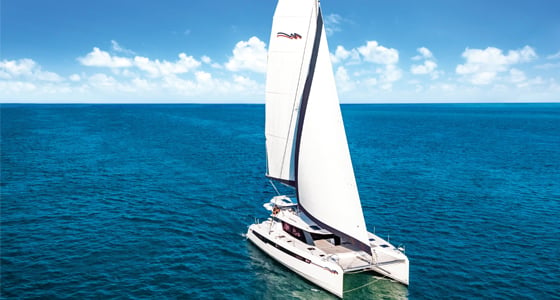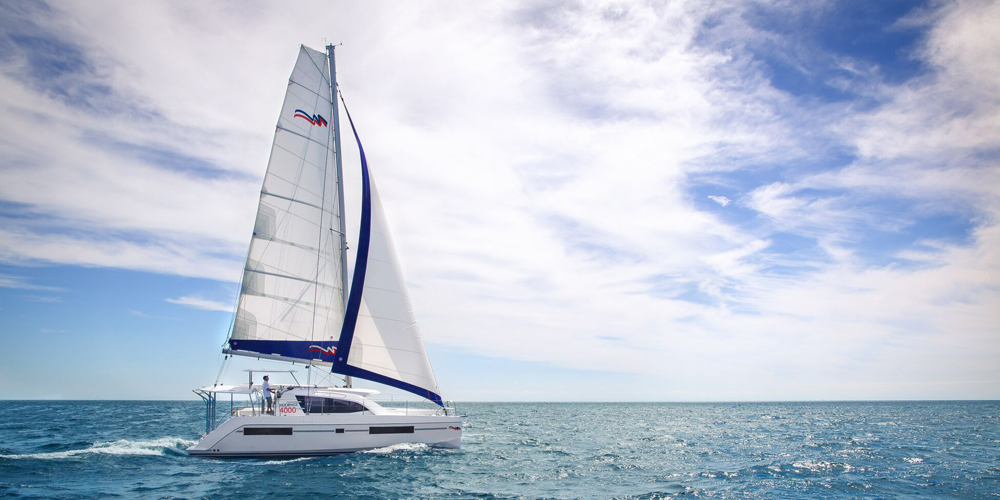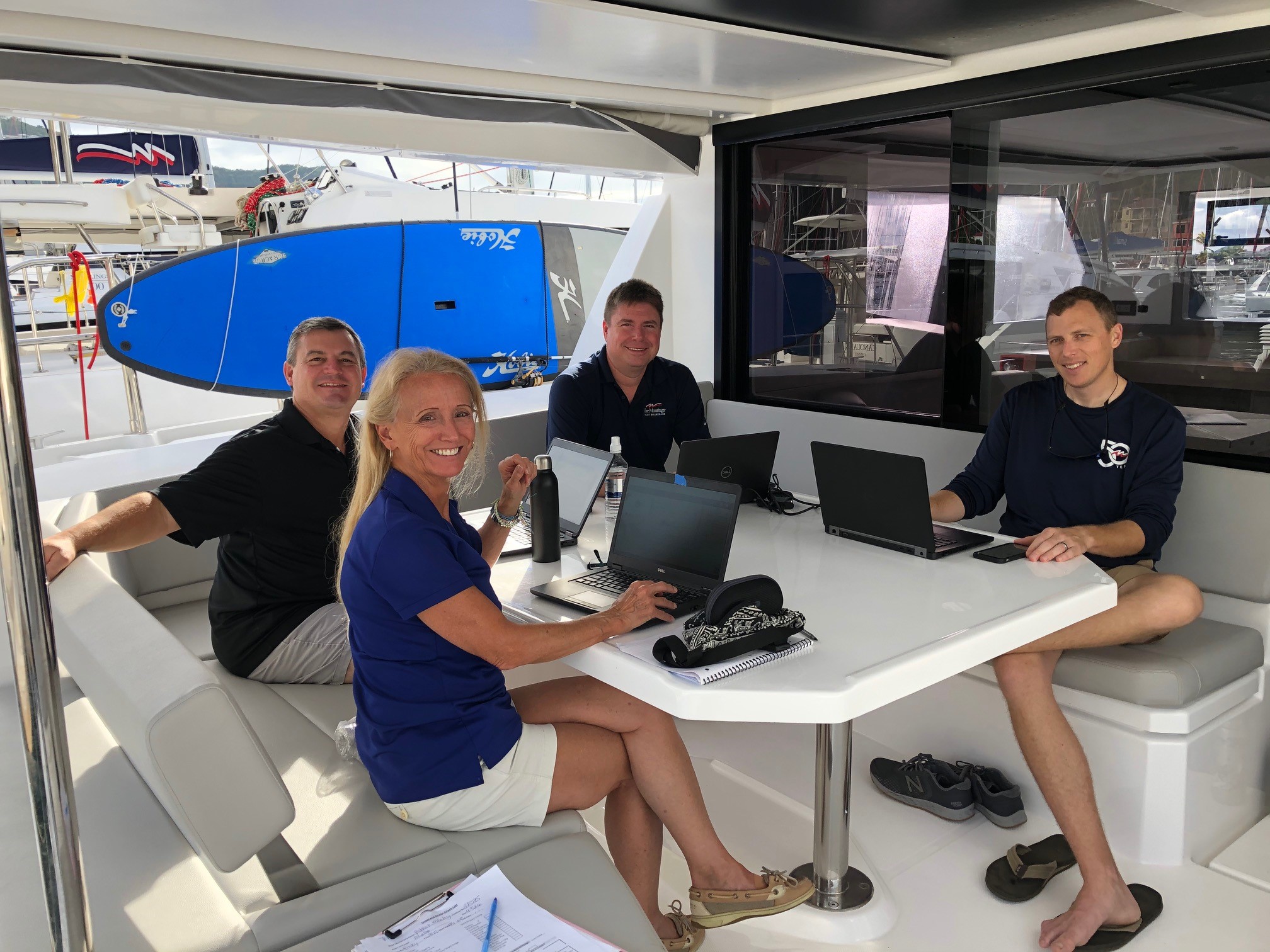Sailing has its own language. And it can be confusing. So, beyond knowing that the pointy end is the bow and the square end is the stern, what else is there to know…
Well let’s imagine that you have been invited to spend an afternoon sailing on a friend’s sailboat. You’re going for just the day, so pack a bag with sunscreen, water, snacks and a hat and be prepared to have a blast.
Once aboard (getting on the boat) you will stow your bag (put away) in a lazarette (storage compartment).

As you motor away from the dock you can sit in the cockpit. That’s the area in the aft of the boat (back end). The person steering the boat is positioned at the helm (steering wheel). You could sit on the starboard side (the right side of the sailboat when facing forward) or the port side (the left side of the sailboat when facing forward), the choice is yours. Time to cast off (take the ropes aka lines off) from the sailboat’s slip (dock with a closed end) and set sail. Remember to bring in those fenders. They are like bumpers that hang over the side of the boat to protect the boat from any damage.
Now you are on your way and it’s time to hoist (raise) the main sail (that’s the sail attached to that tall stick thing we call the mast). You may be asked to raise the main halyard (rope) that is attached to the top of the sail (head) and this will raise the main sail. Then when the sail is all the way to the top you will cleat (secure) the main halyard on the mast. You have some great wind out there, so let’s get the genoa out (small sail at the bow that overlaps the main sail). Finished… not so soon. The sails need to be trimmed. Not like the tinsel on a Christmas tree. You need to trim (adjust the sail) so that the wind fills the sail and it doesn’t look like a bedsheet! I hope you had your Wheaties. Time to grind. This is where you use the handle on the winch (a round spool) to adjust the tension of the of sheets (rope) that is wrapped around the winch and attached to the clew (the lower corner) of the sail to adjust the position of the sails. Well, you are in luck because this sailboat has electric winches and all you had to do was push a button. How nice! Let’s check those telltales, not the kids in school who tell tales. Telltales are strings or wool that are attached on the sail that flow straight across the sail in the wind when you have the sail trimmed just right.

Now you can relax. You can sit on the windward side (the side the wind is blowing from) or the opposite side called the leeward side. You’re now sailing along with the wind in your hair and the sun on your face. This is great, until the captain at the helm yells coming about. (This just means that you’ll be changing direction and going on a different tack or course.) If you are tacking, you are changing direction by going into the wind. However, if the boat jibes, then that means you are changing direction by turning the boat away from the wind so the stern passes through the wind and the sail(s) switches sides. When the boat comes about, either by tacking or doing a jibe, DUCK, because that long pole thing called the boom that the main sail is attached to at the foot of the sail (bottom) might just hit your head as it moves into its new position. And that’s no fun. Ducking is not necessarily a sailing term, but it is a maneuver that you really want to master!
If you are on a Beam Reach, this just means that you are sailing at approximately 90 degrees to the wind. Knowing your captain at the helm, she’ll head up (turn the bow more towards the wind).
Now you’ll be on a Close Reach (wind coming from forward of the beam which is just the widest point of the boat). She’s just looking for more speed. So now the captain will sail as close as possible to the wind, which is a Close Haul.

Now you’re sailing! There’s only one thing left to do. Raise your glass and be reminded that any day "I'd Rather be Sailing." And if you want to know how this voyage ends, stay tuned for Part !! of this blog...
See you on the water,
Darla May


